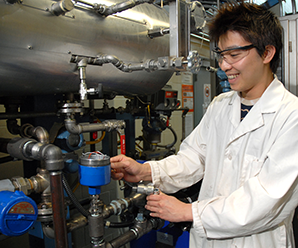 The cost of monitoring process equipment has been dropping due to wireless technology, allowing for significantly more data points in the process loop to be considered provided that the refiner makes the investment in required sensors and linked instrumentation systems. All indications are that sensors will become pervasive throughout the refinery, on heat exchangers, compressors, pumps, etc. This high level of “pervasive sensing” returns real time information on every of refinery operations. The challenge involves the efficient interpretation of this sea of data.
The cost of monitoring process equipment has been dropping due to wireless technology, allowing for significantly more data points in the process loop to be considered provided that the refiner makes the investment in required sensors and linked instrumentation systems. All indications are that sensors will become pervasive throughout the refinery, on heat exchangers, compressors, pumps, etc. This high level of “pervasive sensing” returns real time information on every of refinery operations. The challenge involves the efficient interpretation of this sea of data.
Driven by performance and reliability objectives, all indications are that refiners are going forward with upgrading and increasing the number of “data points” to be monitored. For example, Emerson Process Management recently wrote about how one refinery in the US Midwest reported that a process hazardous analysis (PHA) found 100 high-risk pumps that were at risk for vapor-cloud releases and potential fires. So the refiner fitted the pumps with Emerson’s CSI 9420 wireless vibration transmitters for continuous fault detection.
While the exact amount of the investment is not currently available, these real scenarios pay off by preventing possible catastrophic failures. For example, on one of these 100 high-risk pumps, refinery personnel detected an increase in vibration and confirmed it with an Emerson CSI 2130 analyzer. This triggered a work order to shut down the pump while a solution to the problem was implemented.
According to information available from Emerson, three or four additional pumps at this specific refinery were shut down within a time span of about eight months in order to fix similar vibration problems.
It’s no secret that preventing unplanned shutdowns and the potential for catastrophic failures is the process industry’s top priority. Having noted that, many engineers are nonetheless too busy to put a high priority on getting and analyzing equipment data (e.g., increasing pump vibration, heat exchanger fouling, etc.), so what happens is that their units (e.g., cat cracking unit) run at lower efficiency that could lead to an unplanned outage due to lack of attention to a small problem getting out of control.
Pressure, temperature and flow measurements around equipment such as a bank of heat exchangers in a hydrotreating unit can notify an engineer with quite a lot of data, such as how fast the heat exchanger is fouling and when it needs to be cleaned—provided the engineer is paying attention to the data. Even if there are no failures or shutdowns, heat losses due to fouling must be made up by higher severity furnace firing, and consequently higher energy consumption. The rapidly declining cost in wireless technology is evolving to make more efficient use of a refiner’s installed investment in instrument and connected analytical systems, and will be discussed at length with upcoming issues of Refinery Operations







Leave a Reply
You must be logged in to post a comment.